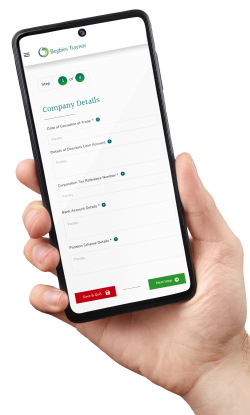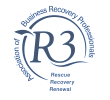When a limited company closes down, liquidation and dissolution are the two processes by which directors can bring the business to an end and remove the company from the register of active companies held at Companies House.
One of the main considerations when deciding whether to liquidate or dissolve a company is its financial position at the point of closure– essentially, whether it is solvent or insolvent. This is of huge importance as if solvency is misjudged and the wrong process used as a result, it can have serious implications for directors going forwards.
But although the solvency of the company is the initial consideration, there are other elements that need to be taken into account when closing down a limited company. So what are the key differences between these procedures, and how do you know whether to choose liquidation or dissolution?
Concerned about the National Insurance increase?
For the 2024-25 tax year, the rate of employer National Insurance increases from 13.8% to 15% adding yet more pressure onto already squeezed cash flows. If you are worried about the impact this could have on your company’s finances, talk to the experts at UK Liquidators. As licensed insolvency practitioners we can explain your options and help you plot a way forward. Call today on 0800 063 9262.
There are three types of liquidation available to companies in the UK. The right one for you will depend on a number of factors, primarily the financial position of your company at the time of closure:
Liquidation - whichever type is chosen - is a formal procedure which requires the appointment of a licensed insolvency practitioner. This is non-negotiable, but there are significant benefits for directors in doing so. You gain reassurance that the company is being closed down in accordance to UK legislation. The input of a licensed insolvency practitioner means that once assets have been liquidated and the company removed from the register at Companies House, it is highly unlikely to be reinstated at any time in the future.
Due to the involvement of a licensed insolvency practitioner, professional fees must be paid for company liquidation. In the majority of cases, these fees are paid for using company assets, meaning directors do not have to personally cover these costs.
Liquidation Portal
For Company Directors

Company dissolution is a cost-effective way to close an unwanted limited company, but you must be sure that your company is solvent before starting the process.
To be considered solvent you must be able to repay the company’s debts within 12 months of the closure date, but don’t forget to include contingent liabilities in your calculation. These are payments that might be required in the future – in relation to a pending employee or customer claim against the company, for example.
One of the main benefits of dissolution for those companies that qualify is that the process can be instigated and carried out by company directors without the need to appoint a licensed insolvency practitioner. This cuts down on time as well as cost.
In order to be able to dissolve your company, you have to carry out specific actions to comply with the regulations surrounding this process, however, including ceasing trade three months before you apply, closing business bank accounts, and ending your payroll scheme. You must also notify all interested parties about your intention to dissolve after you submit your application to Companies House.
If any creditors do exist - meaning your company is not in fact solvent - they can object to the strike off application and have the process halted. You should also be aware that even if your application to dissolve your company is successful, it can be reinstated to the register at a later date should a creditor come to light who wants to recover the money they are owed.
Dissolution should only be chosen if your company is solvent and has no outstanding creditors.
Start your online liquidation today
If you have decided liquidation is the right option for your limited company, you can take the first step and begin the process online using our online portal. Starting the process is quick, simple, and can be done at a time that suits you. Your information will be submitted to your local UK Liquidators insolvency practitioner who will be with you every step of the way. Click here to start your company’s liquidation online.
So what is an insolvent company and how do you know whether your business is solvent or insolvent? Insolvency occurs in two ways. A company is insolvent when it can’t afford to pay its debts as they fall due; the second way insolvency is defined is when the total value of the company’s liabilities is greater than its assets.
As a company director, it is vitally important that you keep on top of your company's financial position. If you carry on trading when your company has become insolvent, you could be held liable for some or all of the company’s debts, and face potential disqualification as a result.
This is why it’s important to seek professional help when you start to experience financial problems in the business, and when testing for the company’s solvency; professional advice from a licensed insolvency practitioner can help protect yourself and your creditors, and allow you to choose the correct closure route.
While the choice between liquidation and dissolution is initially based on your company’s financial status, the options don’t end there. If your company is solvent you have a choice between closing it down yourself via dissolution or entering into an MVL which could be a more tax-efficient process if you have significant profits to distribute to shareholders.
Our experts at UK Liquidations can help you make the right choice when it comes to closing your limited company, whether it is solvent or insolvent. We will present your options in detail and provide professional guidance and support every step of the way. We offer free same-day consultations and work from a network of offices around the country, so please contact one of the team to find out more.
By completing the test, you will receive:
If you are considering liquidation for your company, taking expert advice at an early stage is crucial. At UK Liquidators, our team of licensed insolvency practitioners are committed to providing limited company directors with the help and advice they need to make an informed decision.




Looking for immediate support?
Complete the below to get in touch